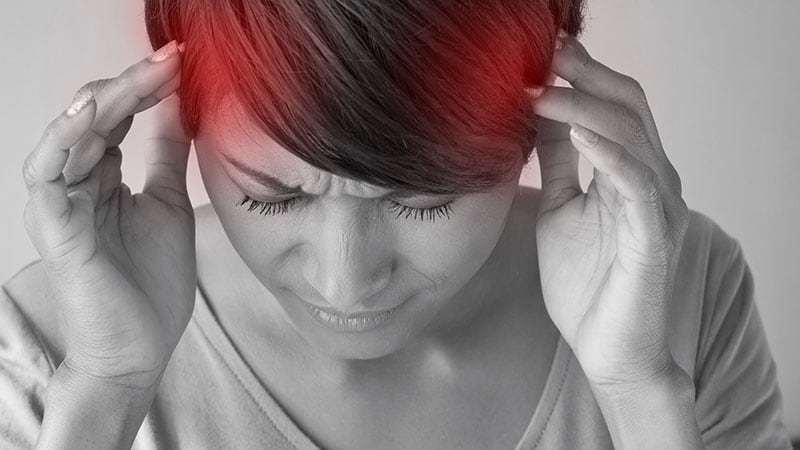[ad_1]
TOPLINE:
Weekly nonpharmacologic intranasal kinetic oscillation stimulation is linked to a significant decrease in monthly headache days (MHDs) with moderate to severe intensity in patients with chronic migraine, a new study suggests.
METHODOLOGY:
- The randomized, double-blind, sham-controlled trial included 144 patients with chronic migraine across 10 centers in Germany and Finland from 2018 to 2022.
- Overall, 71 participants received active kinetic oscillation stimulation (85 Hz; 80 mbar) and 69 received sham intranasal stimulation (no vibration; 30 mbar). Both treatments were administered once weekly for 10 minutes per nostril over 6 weeks and stratified by medication overuse.
- The primary endpoint was mean change from baseline in number of MHDs with moderate to severe intensity during the 4-week performance assessment period.
- Secondary outcomes included mean change from baseline in number of monthly migraine days, proportions of participants achieving ≥ 30% and ≥ 50% reduction in the number of MHDs, and median change in the use of acute medication, assessed over both the performance and 4-week follow-up periods.
TAKEAWAY:
- Active treatment was associated with a significantly greater reduction in number of MHDs than was sham treatment during the performance assessment period (adjusted mean difference, −3.5 days vs − 1.2 days, respectively; P = .01).
- Compared with sham treatment, active treatment was also linked to a significant reduction in number of monthly migraine days during both periods of performance assessment (mean difference, −2.4; P = .005) and follow-up (mean difference, −2.9; P = .0008).
- Treatment response rates were notably higher in the active group than in the sham group, with 47% vs 25% achieving ≥ 30% reduction in the number of MHDs (P = .015).
- The kinetic oscillation stimulation’s safety profile was favorable, with similar rates of treatment-emergent adverse events (TEAEs) between the active (63%) and sham (60%) groups. Nasopharyngitis (8%), dizziness (6%), and epistaxis (6%) were the most common TEAEs.
IN PRACTICE:
“The Chordate system may therefore represent a valuable addition to the therapeutic portfolio of preventive treatments for [chronic migraine], and due to its nonpharmacologic mechanism of action, it is particularly suitable for patients who are worried about systemic side effects,” the investigators wrote.
SOURCE:
The study was led by Jan Hoffmann, PhD, Wolfson Sensory, Pain and Regeneration Centre, Institute of Psychiatry, Psychology & Neuroscience, King’s College London, London, United Kingdom. It was published online on January 09 in Neurology.
LIMITATIONS:
Although the study was conducted in a double-blind fashion, there was a potential risk that the participants could distinguish between active and sham stimulation. The relatively short 6-week stimulation period was another limitation; extending this period may have improved the effectiveness of the treatment, the investigators note.
DISCLOSURES:
The study was funded by Chordate Medical AB. Several investigators reported receiving industry fees or research grants and holding stocks, with some serving on editorial boards and professional societies. Full details are listed in the original article.
This article was created using several editorial tools, including AI, as part of the process. Human editors reviewed this content before publication.
[ad_2]
Source link : https://www.medscape.com/viewarticle/novel-nasal-device-may-help-reduce-monthly-migraines-2025a10002y0?src=rss
Author :
Publish date : 2025-02-06 07:54:38
Copyright for syndicated content belongs to the linked Source.
